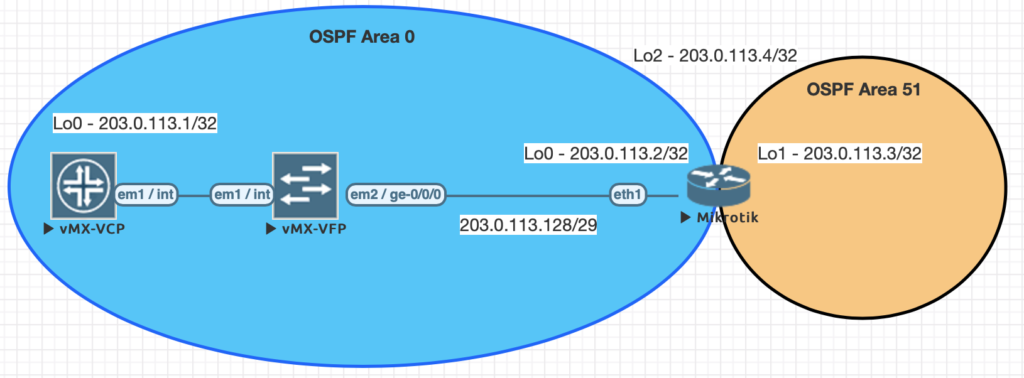Rant: Broadcom and Network Operating System Vendors
Minh Ha left the following rant as a comment on my 5-year-old What Are The Problems with Broadcom Tomahawk? blog post. It’s too good to be left gathering dust there. Counterarguments and other perspectives are highly welcome.
So basically a lot of vendors these days are just glorified Broadcom resellers :p. It’s funny how some of them try to up themselves by saying they differentiate their offerings with their Network OS.
Mid-Band Spectrum in the USA: First and Last
The expanded use-models of radio spectrum and its availability open up opportunities for new applications and better communications.Kubernetes Observability Challenges: The Need for an AI-Driven Solution
Kubernetes provides abstraction and simplicity with a declarative model to program complex deployments. However, this abstraction and simplicity create complexity when debugging microservices in this abstract layer. The following four vectors make it challenging to troubleshoot microservices.
- The first vector is the Kubernetes microservices architecture, where tens to hundreds of microservices communicate. Debugging such a componentized application is challenging and requires specialized tools.
- The second vector is the distributed infrastructure spread across heterogeneous on-premises and cloud environments.
- The third vector of complexity is the dynamic nature of Kubernetes infrastructure. The platform spins up required resources and provides an ephemeral infrastructure environment to scale the application based on demand.
- Lastly, in such a distributed environment, Kubernetes deployments need fine-grained security and an observability model with defense-in-depth to keep them secure. While modern security controls effectively protect your workloads, they can have unintended consequences by preventing applications from running smoothly and creating an additional layer of complexity when debugging applications.
Today, DevOps and SRE teams must stitch together an enormous amount of data from multiple, disparate systems that monitor infrastructure and services layers in order to troubleshoot Kubernetes microservices issues. Not only is it overwhelming to stitch this data, but troubleshooting using Continue reading
The Dystopian Reality Of Human Data Trafficking
Amazon Alexa wants me to know that they celebrate International Data Privacy Day. I’m awestruck at the chutzpah of this claim.
Reviews of a Samsung smart television I’m considering express frustration at the crapware loaded onto the system because it is difficult to navigate and tracks viewing habits.
An app I need for my Mac immediately requests access to my Documents and Downloads folders for no obvious reason. Denying the request has no impact on the functioning of the app.
A phone app I use to help me track strength exercises wants me to share my data with the Health app. It won’t stop asking me about it, even though I’ve repeatedly denied the request. Why? It’s not just for my own well-being, I’m certain.
Garmin shares my workout data, all highly personal containing health & location information, with various third parties, and there’s no way to opt out if you want to use their hardware.
Twitter delivers customized ads, even though I had at one time opted out, at a rate of 1 in 3 or 1 in 4 tweets to my timeline.
Facebook rages against Apple for daring to require that apps hosted in the Apple store contain Continue reading
New Software Yields New Bugs – Video
Day Two Cloud podcast co-host Ned Bellavance asks Envoy creator Matt Klein about the insane rate of change in cloud tech, running plain old VMs, and growing hay. Matt’s not a fan of change for the sake of change. Hear this entire discussion on Episode 82 of the Day Two Cloud podcast published January 27, […]
The post New Software Yields New Bugs – Video appeared first on Packet Pushers.
A Nation Divided: Innovating Internet Accessibility for All
Until we have a better standard for infrastructure and access across the U.S., many will still need to get creative to meet today's critical demands.Tech Bytes: Aruba Fabric Composer Automates And Orchestrates Leaf-Spine Network Provisioning (Sponsored)
Today’s Tech Bytes dives into the Aruba Fabric Composer. This is data center software that can automate the provisioning of your network underlay and overlay, plus capabilities for orchestration, visibility, and troubleshooting. Aruba Networks is our sponsor. We're joined by Simon McCormack, Senior Manager, Product Management, at Aruba Networks.Tech Bytes: Aruba Fabric Composer Automates And Orchestrates Leaf-Spine Network Provisioning (Sponsored)
Today’s Tech Bytes dives into the Aruba Fabric Composer. This is data center software that can automate the provisioning of your network underlay and overlay, plus capabilities for orchestration, visibility, and troubleshooting. Aruba Networks is our sponsor. We're joined by Simon McCormack, Senior Manager, Product Management, at Aruba Networks.
The post Tech Bytes: Aruba Fabric Composer Automates And Orchestrates Leaf-Spine Network Provisioning (Sponsored) appeared first on Packet Pushers.
Rethinking BGP on the DC Fabric
Everyone uses BGP for DC underlays now because … well, just because everyone does. After all, there’s an RFC explaining the idea, every tool in the world supports BGP for the underlay, and every vendor out there recommends some form of BGP in their design documents.
I’m going to swim against the current for the moment and spend a couple of weeks here discussing the case against BGP as a DC underlay protocol. I’m not the only one swimming against this particular current, of course—there are at least three proposals in the IETF (more, if you count things that will probably never be deployed) proposing link-state alternatives to BGP. If BGP is so ideal for DC fabric underlays, then why are so many smart people (at least they seem to be smart) working on finding another solution?
But before I get into my reasoning, it’s probably best to define a few things.
In a properly design data center, there are at least three control planes. The first of these I’ll call the application overlay. This control plane generally runs host-to-host, providing routing between applications, containers, or virtual machines. Kubernetes networking would be an example of an application overlay control plane.
The Week in Internet News: Cook Blasts Social Media Algorithms

Disinformation bots: Apple CEO Tim Cook raised concerns about social media algorithms promoting disinformation during a speech at an international privacy conference, ZDNet reports. “At a moment of rampant disinformation and conspiracy theories juiced by algorithms, we can no longer turn a blind eye to a theory of technology that says all engagement is good engagement – the longer the better – and all with the goal of collecting as much data as possible,” he said.
Gaming the stock market: In a rebellion against large Wall Street short sellers, a group of individual investors centered around a Reddit forum have been driving up the price of GameStop stock, even as the company faces questions about its long-term viability. One founder of the Reddit community called the effort “a train wreck happening in real time,” CNet reports. GameStop’s stock has shot up by more than 2700 percent since the beginning of the year, even as the bricks-and-mortar game software vendor is facing business challenges.
The power of Big Tech: The head of Saudi Arabia’s sovereign wealth fund is raising concerns about the huge influence of large tech firms, Arabian Business says. The fund is worried about “how some of these technology Continue reading
Network Break 318: Cisco Unveils New Catalyst Hardware; Internet Sleuth Uncovers Global IPv4 Misuse
Today's Network Break explores new Catalyst hardware and micro switches from Cisco, a new security offering from Fortinet that combines endpoint security with cloud analytics, an Internet sleuth tracking IPv4 shenanigans, financial results from Juniper and F5, and a whopping big investment for routing startup DriveNets.Network Break 318: Cisco Unveils New Catalyst Hardware; Internet Sleuth Uncovers Global IPv4 Misuse
Today's Network Break explores new Catalyst hardware and micro switches from Cisco, a new security offering from Fortinet that combines endpoint security with cloud analytics, an Internet sleuth tracking IPv4 shenanigans, financial results from Juniper and F5, and a whopping big investment for routing startup DriveNets.
The post Network Break 318: Cisco Unveils New Catalyst Hardware; Internet Sleuth Uncovers Global IPv4 Misuse appeared first on Packet Pushers.
The Quantum Internet – Wojciech Kozlowski, Postdoctoral Researcher @ TU Delft
Wojciech explains what Quantum Networking/Internet is and what it’s not. Rick and Melchior ask Wojciech all about entanglement, fidelity, qubits, Quantum Key Distribution (QKD), spooky action at a distance and his work in the IETF Quantum Internet Research Group (QIRG).

Thank You for All the Great Work Miha
Almost exactly a year ago Miha Markočič joined the ipSpace.net team. He was fresh out of university, fluent in Python, but with no networking or automation background… so I decided to try my traditional method of getting new team members up to speed: throw them into the deep water, observe how quickly they learn to swim, and give them a few tips if it seems like they might be drowning.
It worked out amazingly well. Miha quickly mastered the intricacies of AWS and Azure, and created full-stack automation solutions in Ansible, Terraform, CloudFormation and Azure Resource Manager to support the AWS and Azure webinars, and the public cloud networking online course.
Thank You for All the Great Work Miha
Almost exactly a year ago Miha Markočič joined the ipSpace.net team. He was fresh out of university, fluent in Python, but with no networking or automation background… so I decided to try my traditional method of getting new team members up to speed: throw them into the deep water, observe how quickly they learn to swim, and give them a few tips if it seems like they might be drowning.
It worked out amazingly well. Miha quickly mastered the intricacies of AWS and Azure, and created full-stack automation solutions in Ansible, Terraform, CloudFormation and Azure Resource Manager to support the AWS and Azure webinars, and the public cloud networking online course.
Juniper To MikroTik – OSPF Commands
About the Juniper to MikroTik Series
In the world of network engineering, learning a new syntax for a NOS can be daunting if you need a specific config quickly. Juniper is a popular option for service providers/data centers and is widely deployed across the world.
This is a continuation of the Rosetta stone for network operating systems series. In this portion of the series we will be covering Open Shortest Path First, OSPF, version 2 which is a popular interior gateway protocol (IGP).
You can find the first article of the series Juniper to Mikrotik – BGP Commands here.
While many commands have almost the exact same information, others are as close as possible. Since there isn’t always an exact match, sometimes you may have to run two or three commands to get the information needed.
Using EVE-NG for testing
We conducted all testing on EVE-NG utilizing the topology seen below.

| JunOS Command | MikroTik Command |
|---|---|
| show ospf neighbor | routing ospf neighbor print |
| show ospf interface | routing ospf interface print |
| show ospf overview brief | routing ospf instance print detail |
| show ospf database | routing ospf lsa print |
| show route protocol ospf | ip route print where ospf=yes |
| show Continue reading |
Fence Rail Transposition and Caesar Ciphers in Python
Recently I wrote simple encryption and decryption programs in Python to practice my coding skills. The first cipher_encrypt utility takes the clear_text.txt file as input. It first capitalizes all letters and then encrypts the text with the Rail fence cipher. The number of rows can be set using the variable k. The result of the […]Continue reading...
Worth Reading: Understanding Table Sizes on the Arista 7050QX-32
Arista published a blog post describing the details of forwarding table sizes on 7050QX-series switches. The description includes the base mode (fixed tables), unified forwarding tables and even the IPv6 LPM details, and dives deep into what happens when the switch runs out of forwarding table entries.
Too bad they’re describing an ancient Trident-2 ASIC (I last mentioned switches using it in 2017 Data Center Fabrics update). Did NDA expire on that one?